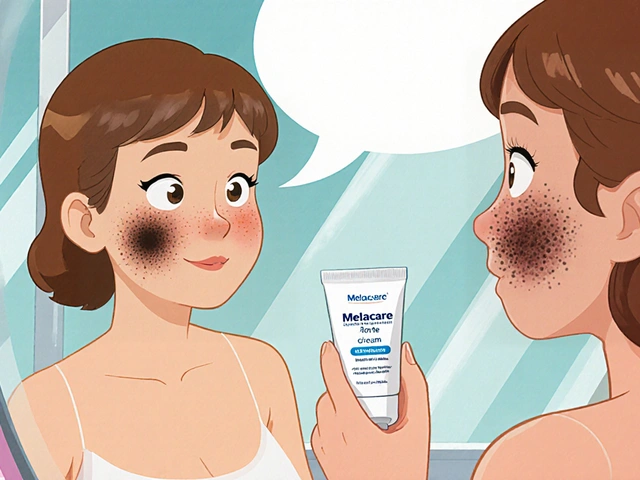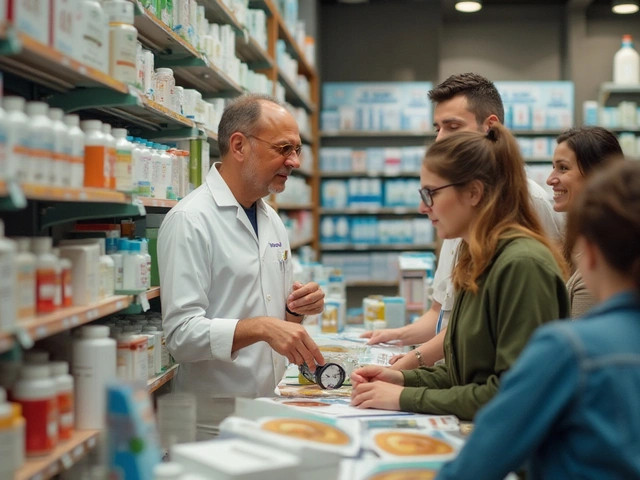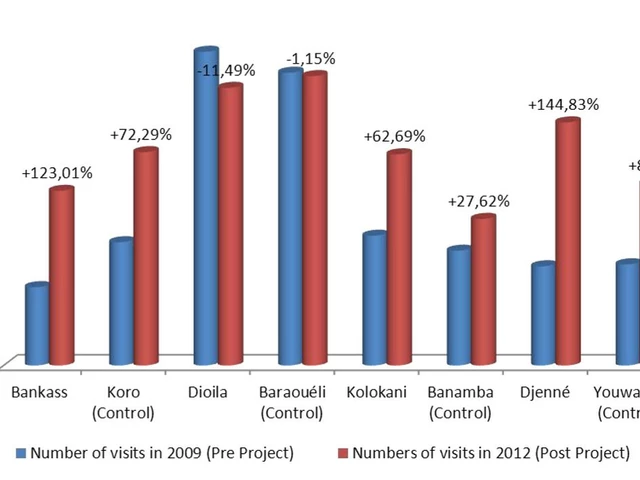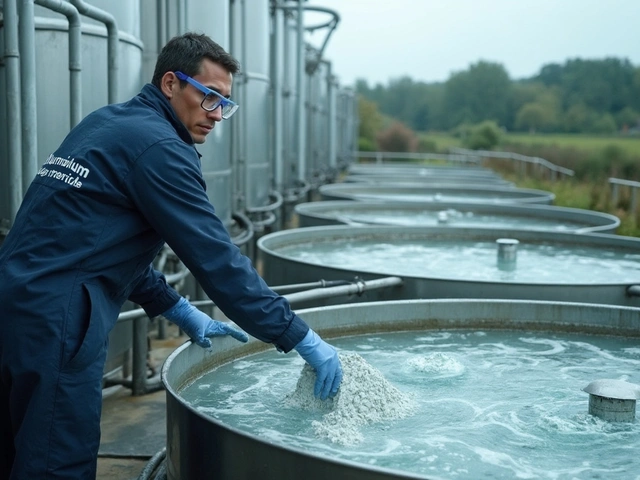Allergy Symptom Checker
Seasonal allergies is a type of allergic reaction triggered by airborne allergens that peak during specific times of the year, such as spring or fall. When you share a home with a furry companion, the picture gets a little messier. Pets can both suffer from the same pollen‑driven irritation and act as carriers of allergens, spreading them on fur and paws. This guide helps you spot the warning signs in both humans and animals, then walks you through practical ways to keep the sneezes, itchy eyes, and restless nights at bay.
TL;DR - Quick Takeaways
- Watch for watery eyes, sneezing, and itchy skin in both you and your pet when pollen counts rise.
- Reduce indoor allergen load with HEPA air filtration and regular grooming.
- Use vet‑approved antihistamines or nasal sprays for quick relief; consider immunotherapy for long‑term control.
- Track symptoms with a simple diary to pinpoint triggers and measure treatment success.
Understanding the Main Triggers
Pollen is a microscopic plant protein released into the air during flowering seasons. It’s the chief culprit behind springtime sniffles. Trees, grasses, and weeds each have their own pollen calendar, which explains why symptoms flare at different times.
Another silent player is pet dander, the tiny, protein‑rich skin flakes that animals shed daily. While dander itself isn’t seasonal, it can cling to pollen particles, turning your cat or dog into a moving pollen collector. This combo can intensify reactions for allergy‑prone household members.
When either pollen or dander lands on the nasal lining, immune cells release histamine, a chemical messenger that dilates blood vessels and triggers itching, sneezing, and mucus production. This cascade creates the classic symptoms we recognize as a cold, but without the virus.
How Symptoms Appear in Humans and Pets
In people, the hallmark signs are:
- Watery, itchy eyes
- Frequent sneezing
- Runny or congested nose
- Itchy throat or post‑nasal drip
- Occasional skin rash or hives
Pets display a different yet overlapping set of clues:
- Scratching or licking paws excessively
- Red, inflamed ears or face
- Sneezing or nasal discharge
- Hair loss in localized patches
- Restlessness and difficulty sleeping
Because pets can’t tell you they’re itching, watch their grooming habits closely during high‑pollen weeks. A sudden spike in licking or ear rubbing often signals that the airborne load has become intolerable.
Immediate Relief: Medications That Work for Both Species
The go‑to short‑term fix is an antihistamine medication, which blocks histamine receptors and quiets the allergic cascade. In humans, over‑the‑counter options like cetirizine, loratadine, or fexofenadine are popular because they cause minimal drowsiness. For dogs and cats, veterinarians often prescribe chlorpheniramine or a low‑dose cetirizine-both have a safety record backed by clinical studies.
If nasal congestion is the main gripe, a saline rinse or a steroid nasal spray (fluticasone) can reduce swelling quickly. These sprays are safe for long‑term use and don’t interfere with the pet’s environment.
When medication alone isn’t enough, allergy immunotherapy is a controlled exposure program that trains the immune system to tolerate specific allergens over months or years. Human patients receive sublingual tablets or allergy shots, while pets can be desensitized through subcutaneous injections administered by a veterinary allergist, a specialist trained in canine and feline immunology.

Environmental Controls: Cutting the Allergen Load at Home
Cleaning up the environment delivers the biggest symptom drop for both humans and furry friends. Here are the top three actions:
- Air Filtration: Install a HEPA air purifier that captures 99.97% of particles down to 0.3 microns, including pollen and dander. Models rated for 300 square feet are sufficient for most living rooms, while larger units cover open‑plan homes.
- Regular Grooming: Bathe your dog weekly during high‑pollen periods using a hypoallergenic shampoo. Brush cats daily to pull off dander before it settles on furniture.
- Home Maintenance: Keep windows closed on windy days and use a dehumidifier to prevent mold growth, another seasonal irritant.
For an extra edge, wash your pet’s bedding in hot water (≥60°C) every 2-3 days and vacuum with a vacuum cleaner equipped with a HEPA filter.
Tracking Triggers and Progress
Data beats guesswork. Create a simple symptom diary that logs:
- Date and time
- Pollen count for your zip code (available from national weather services)
- Human symptoms (e.g., sneezes, eye itch)
- Pet observations (e.g., ear scratching, coat condition)
- Treatments used and response
After a few weeks you’ll see patterns: perhaps grass pollen spikes in May, or a particular tree’s pollen lingers longer. Armed with that insight, you can adjust medication dosages or intensify cleaning on peak days.
Comparison of Common Allergy Treatments for Pets
| Treatment | Onset of Relief | Typical Duration | Side Effects | Best For |
|---|---|---|---|---|
| Oral antihistamine | 30‑60minutes | 4‑6hours | Minor drowsiness | Mild, intermittent symptoms |
| Nasal corticosteroid spray | 1‑2hours | 24hours+ | Rare nasal irritation | Persistent nasal congestion |
| Allergy immunotherapy | Weeks to months (build‑up) | Years (maintenance) | Injection site soreness | Severe, year‑round allergies |
Choosing the right approach hinges on symptom severity, lifestyle, and how much you’re willing to invest in long‑term management.
Related Topics to Explore
If you’ve gotten a handle on seasonal allergies, you might also be interested in:
- Asthma and pets - how airborne triggers affect the respiratory system.
- Atopic dermatitis in dogs - the skin‑focused cousin of allergic rhinitis.
- Indoor air quality - strategies beyond filters, like low‑VOC paints.
- Seasonal affective disorder - why mood can dip when pollen counts rise.
Each of these subjects dives deeper into the web of allergens that affect both people and animals.
Frequently Asked Questions
Can my cat develop a seasonal allergy even if it never shows symptoms indoors?
Yes. Cats spend a lot of time outdoors or near windows, so pollen can settle on their fur. When they come inside, the particles transfer to the air, triggering sneezing or watery eyes even if the cat seemed fine at home.
Is it safe to give my dog the same over‑the‑counter antihistamine I use?
Only if a veterinarian approves the specific drug and dosage. Some human antihistamines contain ingredients toxic to dogs, such as xylitol or high doses of diphenhydramine. Always check with a vet first.
How often should I run my HEPA purifier during peak pollen season?
Run it continuously on a high setting. The unit’s filter captures particles as they enter the room, and a constant airflow prevents pollen from building up in the breathing zone.
What’s the difference between allergy shots and sublingual drops?
Allergy shots (subcutaneous immunotherapy) are injected weekly and then monthly, delivering a controlled dose under the skin. Sublingual drops are placed under the tongue daily, offering a needle‑free alternative. Both aim to re‑educate the immune system but have different compliance profiles.
Can regular bathing worsen my dog’s skin if it already has allergies?
Bathing too often can strip natural oils, leading to dry skin and secondary irritation. Stick to once‑or‑twice a week with a hypoallergenic shampoo during high pollen weeks; otherwise, a quick wipe‑down with a damp cloth is enough.







12 Comments
Wow, reading this really hits home 😭. The thought of my poor pup turning into a walking pollen trap makes my heart melt and ache. I've been sneezing non‑stop and watching Fluffy lick his paws like it's a hobby. Maybe a weekly bath and a HEPA filter will save both of us from the misery. Hang in there, fellow allergy warriors! 🌸🐾
I love how clearly the guide breaks down each step, making it easy to follow. The bullet points about HEPA filters and grooming are especially practical. Remember to keep your symptom diary consistent – it helps spot patterns faster. Great job on covering both human and pet symptoms with proper terminology.
Oh, because obviously everyone has a spare HEPA unit and a vet on speed‑dial, right? It's reassuring to know that the solution to a natural pollen surge is simply more money spent on gadgets. Nonetheless, your article does a decent job of summarizing the basics for the masses.
Short and sweet: keep windows closed, run a HEPA, bathe the dog.
i bet the big pharma & the pet food giants are colluding to keep us sniffing forever, cuz if we all stop sneezin they lose their profit stream. they push those over‑the‑counter antihistamines like candy, but nobody talks about the hidden chemicals in cheap shampoos that just make the problem worse. wake up, people!
I've been in the allergy community for years, and I can tell you that the intersection of human and pet symptoms is often overlooked until it reaches a breaking point. When you first notice your cat rubbing its face more than usual, you might attribute it to a simple flea issue, but the pollen season can exacerbate underlying sensitivities that manifest as dermatitis. Over time, the cumulative effect of airborne particles settling on fur turns your beloved companion into a conduit for allergens, spreading them throughout the house. This is why regular grooming, though sometimes tedious, becomes a cornerstone of an effective management plan. A weekly hypoallergenic bath for dogs, combined with daily brushing for cats, removes a significant portion of pollen before it can become airborne again. Moreover, the importance of a high‑efficiency particulate air (HEPA) purifier cannot be overstated; it captures both the microscopic pollen and the finer dander particles that otherwise circulate freely. In my own household, we placed a HEPA unit in the living room and noticed a substantial drop in sneezing episodes within just a few days. Keeping windows closed on windy days may feel oppressive, but it prevents a deluge of pollen from entering, especially during peak bloom periods for trees and grasses. Using a dehumidifier helps as well, because mold thrives in moist environments and adds another layer of irritation. When it comes to medication, I always advise consulting both a physician and a veterinarian to ensure dosages are safe across species. Some human antihistamines, like cetirizine, can be prescribed off‑label for pets, but only under professional guidance. For those with severe reactions, immunotherapy offers a long‑term solution by gradually desensitizing the immune system, though it requires commitment and patience. Tracking your symptoms in a shared diary-recording pollen counts, human reactions, and pet behaviors-creates a valuable data set that can reveal patterns you might otherwise miss. This practice not only informs treatment adjustments but also empowers you to anticipate flare‑ups before they become disruptive. Lastly, never underestimate the psychological comfort of a clean, allergen‑controlled environment; reduced stress can improve overall well‑being for both you and your furry friend. In summary, a multi‑pronged approach-environmental controls, consistent grooming, appropriate medication, and diligent tracking-offers the best chance at reclaiming comfort during allergy season.
Honestly, the whole thing reads like a billionaire’s bedtime story.
Think of the home as an ecosystem where every breath you take influences the next. By introducing a HEPA filter, you’re not just removing pollen; you’re fostering a healthier micro‑environment for both humans and pets. Regular grooming acts like a reset button, clearing the path for cleaner air. 📚🐶 Remember, balance is key-over‑cleaning can strip natural oils, so find a rhythm that respects both comfort and biology.
Listen, we’ve got our own natural remedies back home that work better than any imported filter, and we don’t need to bow to Western hype about “HEPA.” Just keep the dog outside during peak pollen, wash its fur in hot water, and you’ll be fine.
OMG, the allergen cascade is like a domino effect of inflammatory mediators wreaking havoc on the integumentary and respiratory systems-it's pure chaos! The systemic histamine surge triggers vasodilation, mucosal edema, and pruritus across species. If you don’t intervene with layered prophylaxis, you’re heading straight into a bio‑feedback loop of misery.
What they don’t tell you is that the government’s pollen monitoring data is intentionally skewed to keep us dependent on pharmaceutical solutions. The same agencies that push vaccines are also funding the “air purifier” industry, creating a profit vortex that benefits the elite. Don’t be a pawn.
Seriously, this article is just a rehash of old advice with no new insights.